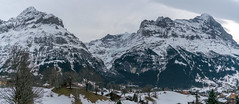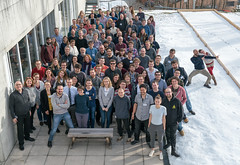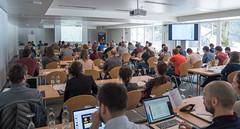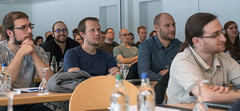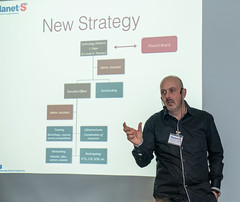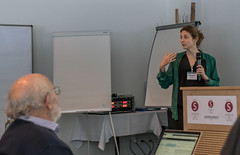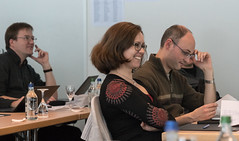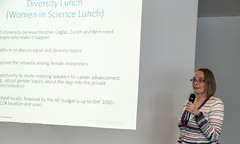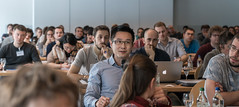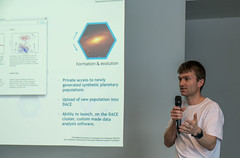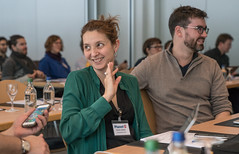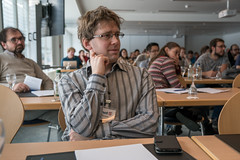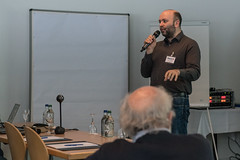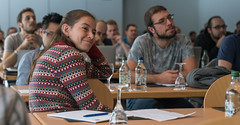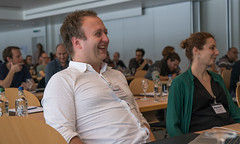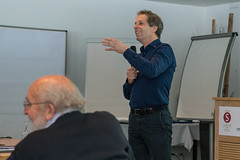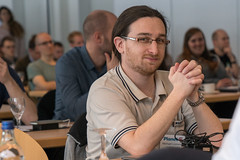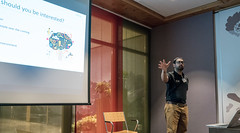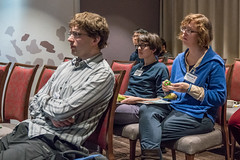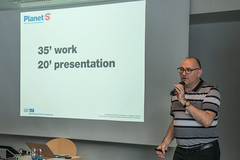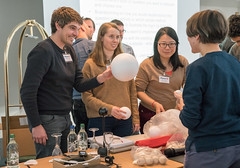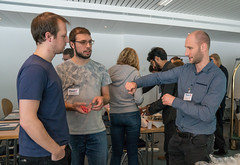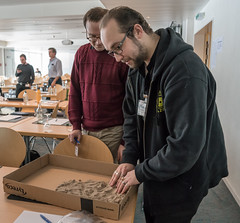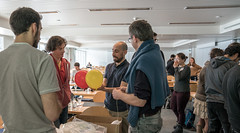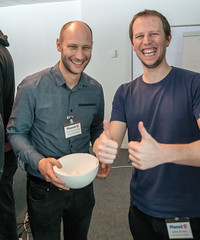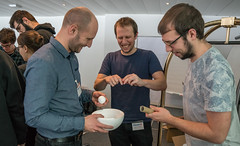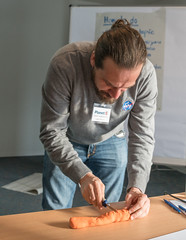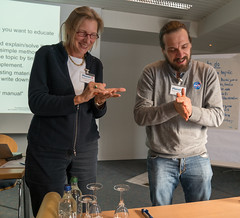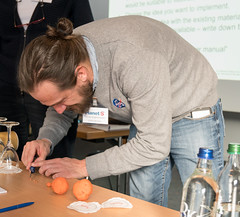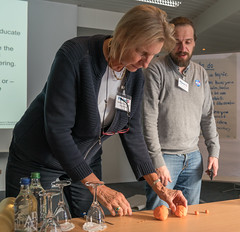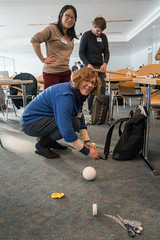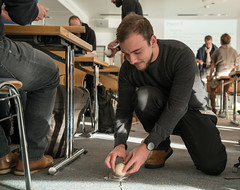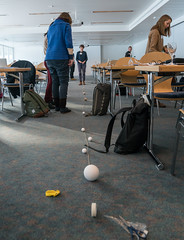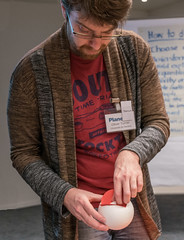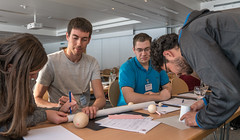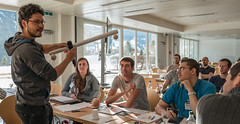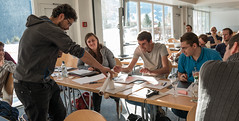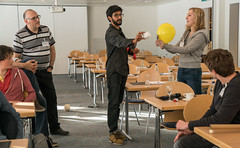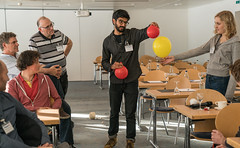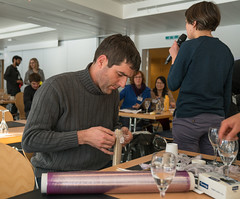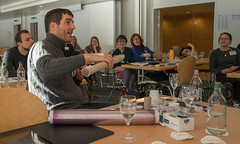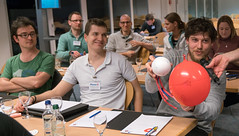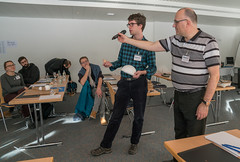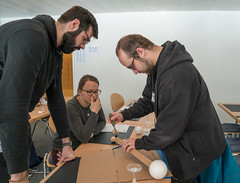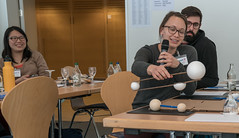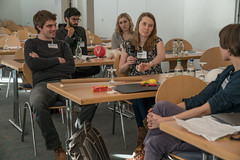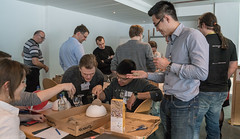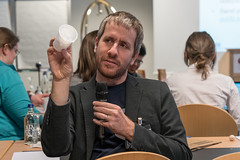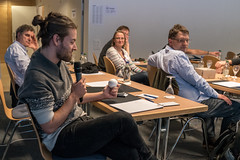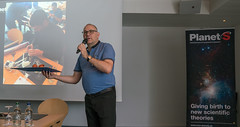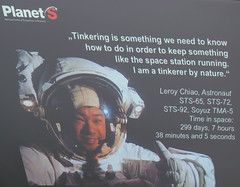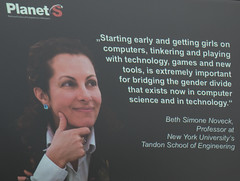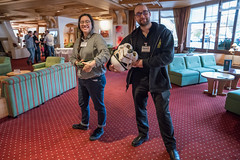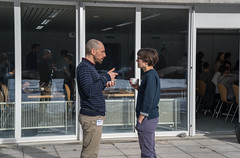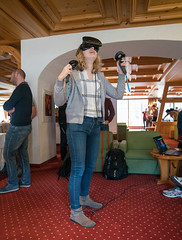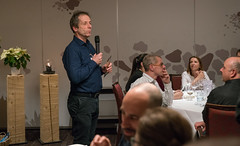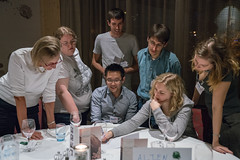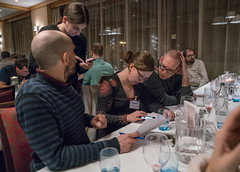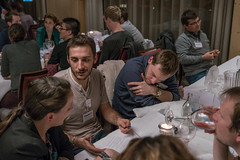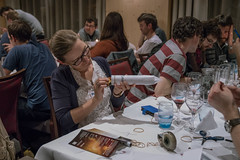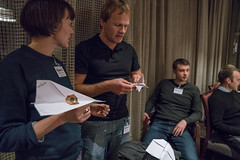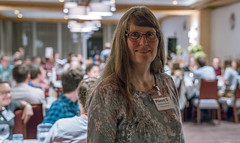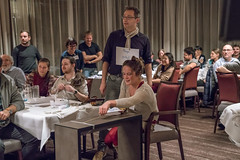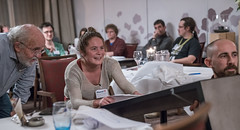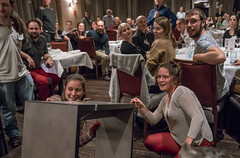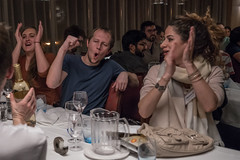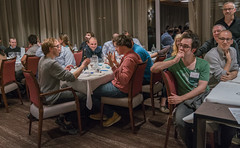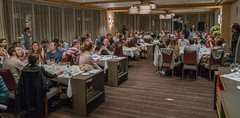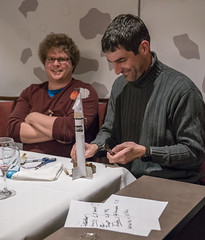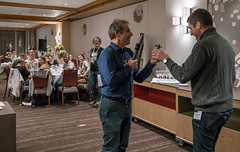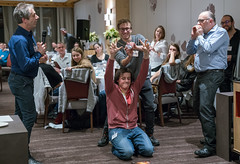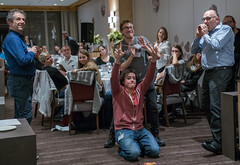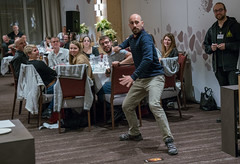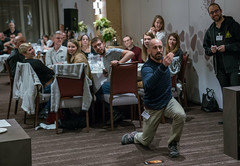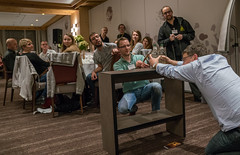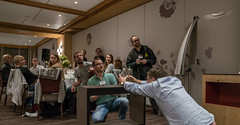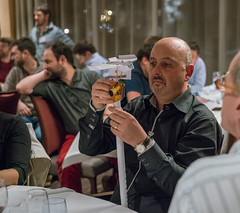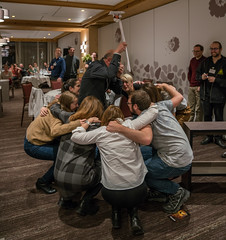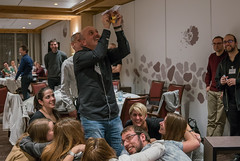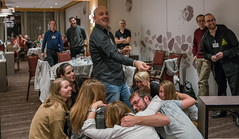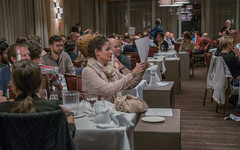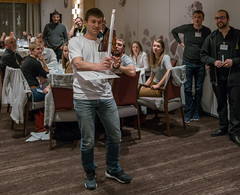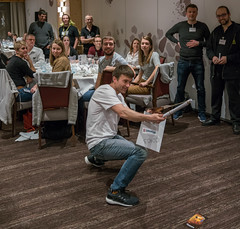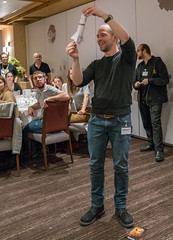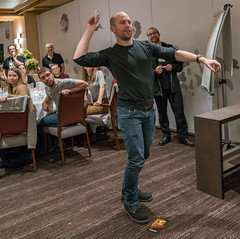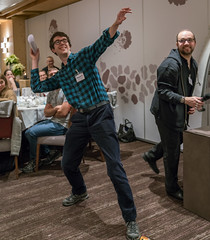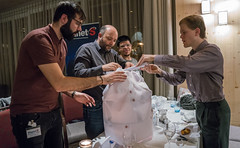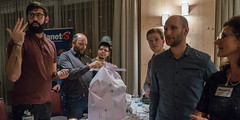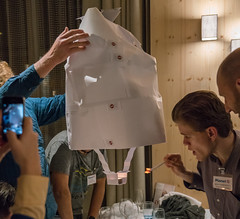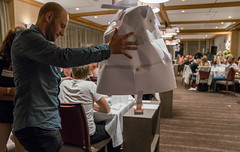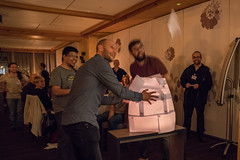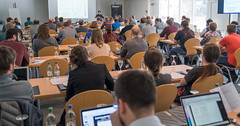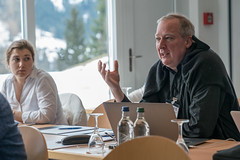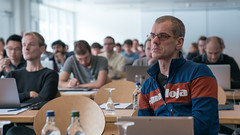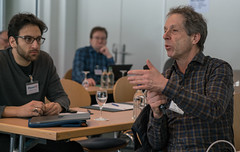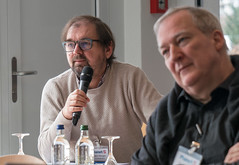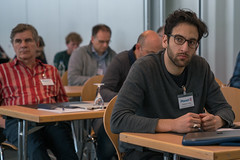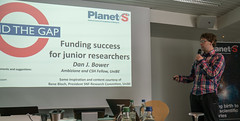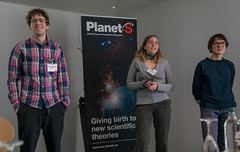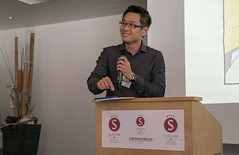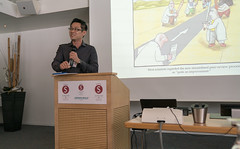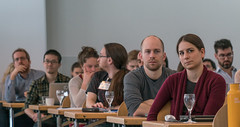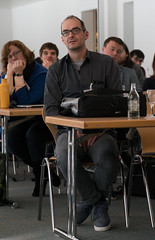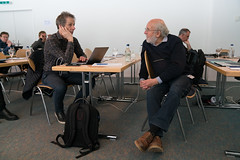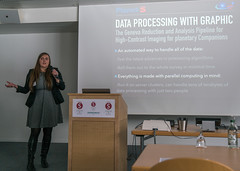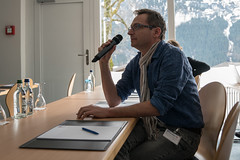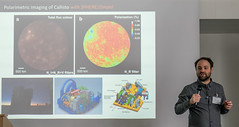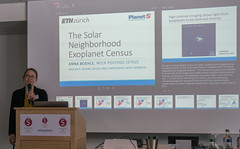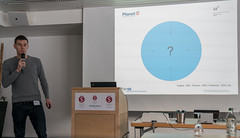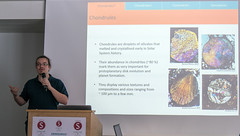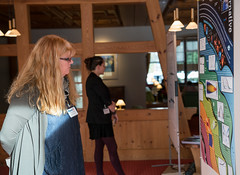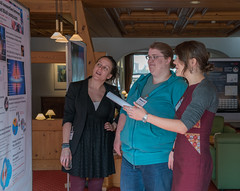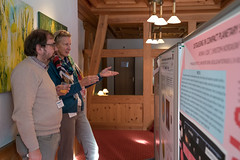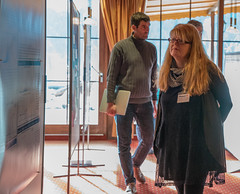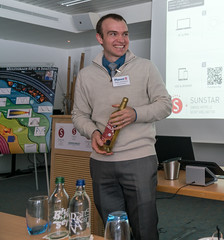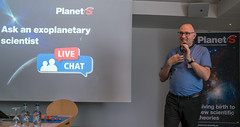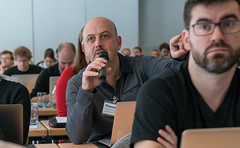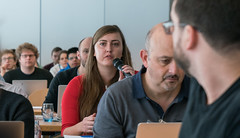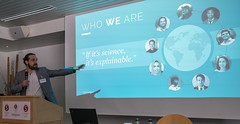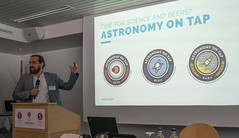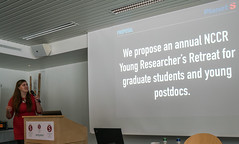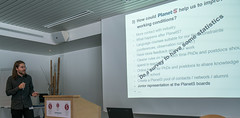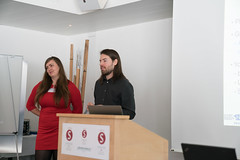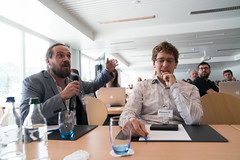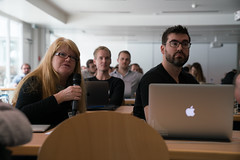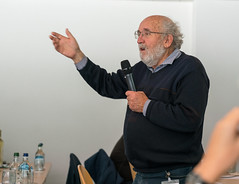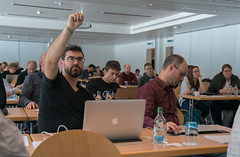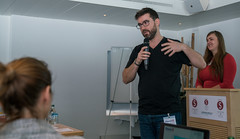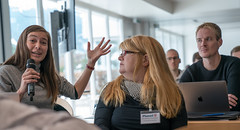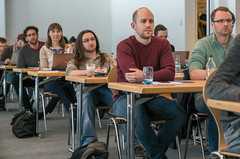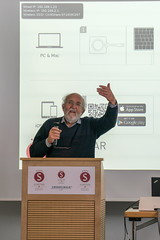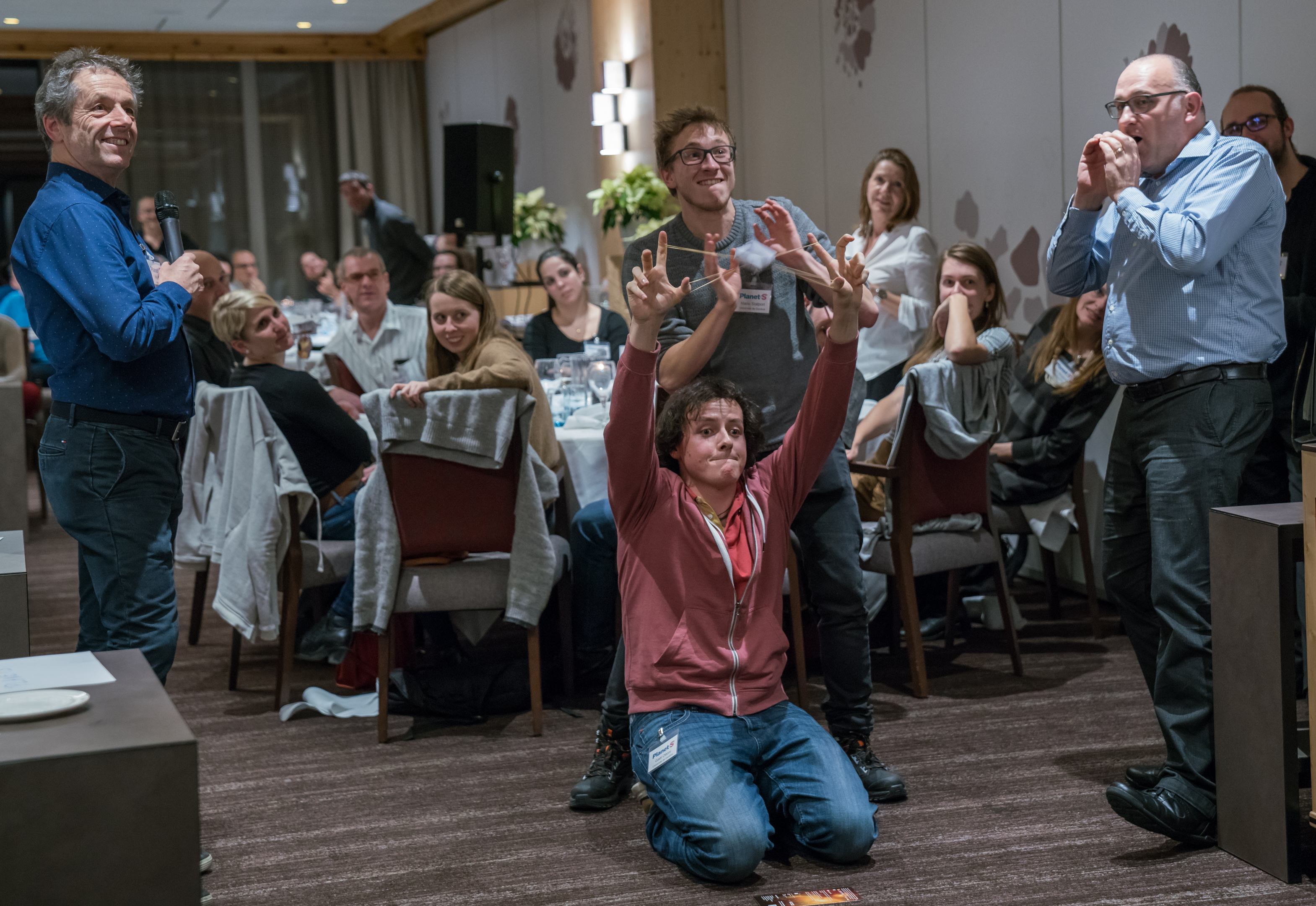Provide a gift for everyone
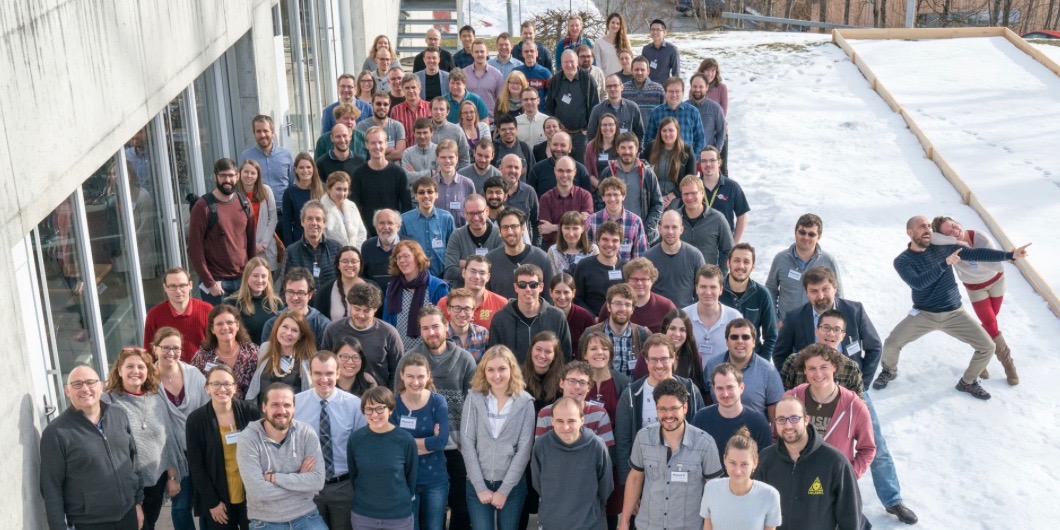
From scientific results to planned projects, from gender issues to rocket construction, and from proposal writing to the life after academia: The program at the General Assembly of the NCCR PlanetS 2018 in Grindelwald was fully packed and provided the 125 participants with material for many discussions.
“You can’t do science without money,” stated Dan Bower, SNSF Ambizione Fellow at the Center for Space and Habitability (CSH) of the University of Bern. Therefore: “Proposal writing is part of the job.” His talk was so convincing that Michel Mayor as representative of the PlanetS Advisory Board suggested the compilation as daily morning reading. Among Dan Bower’s advice: Allow time to allow your ideas to mature. Note deadlines and check mission timetables, because good proposals are timely. Scan the terrain, find out what the big questions are and how you would uniquely contribute. Be ready to take risks. And what you might not think of right away: If you are writing a proposal, give something to experimentalists, to theorists, include as many people as possible, just that everyone feels like they are going to benefit from your work. “Provide a gift for everyone,” the successful applicant recommended.
Caroline Dorn and Judit Szulágyi, Ambizione Fellows as well, presented their projects as examples that received the requested funding. Whereas Caroline Dorn at the University of Zürich is linking geophysics and exoplanetary science to provide tools for analysing observational data, Judit Szulágyi at ETH Zürich studies how giant planets and satellites are forming. So far, no exomoon has been detected yet, but to her surprise the scientist found in her computer simulations that satellites can form very fast. “This might be great news for exomoon hunting,” she concluded. With the help of CSH Fellow Susanne Wampfler at the University of Bern, Judit Szulágyi also successfully applied for observing time with the Atacama Large Millimeter/submillimeter Array to study planet planet forming in circumplanetary disks with ALMA.
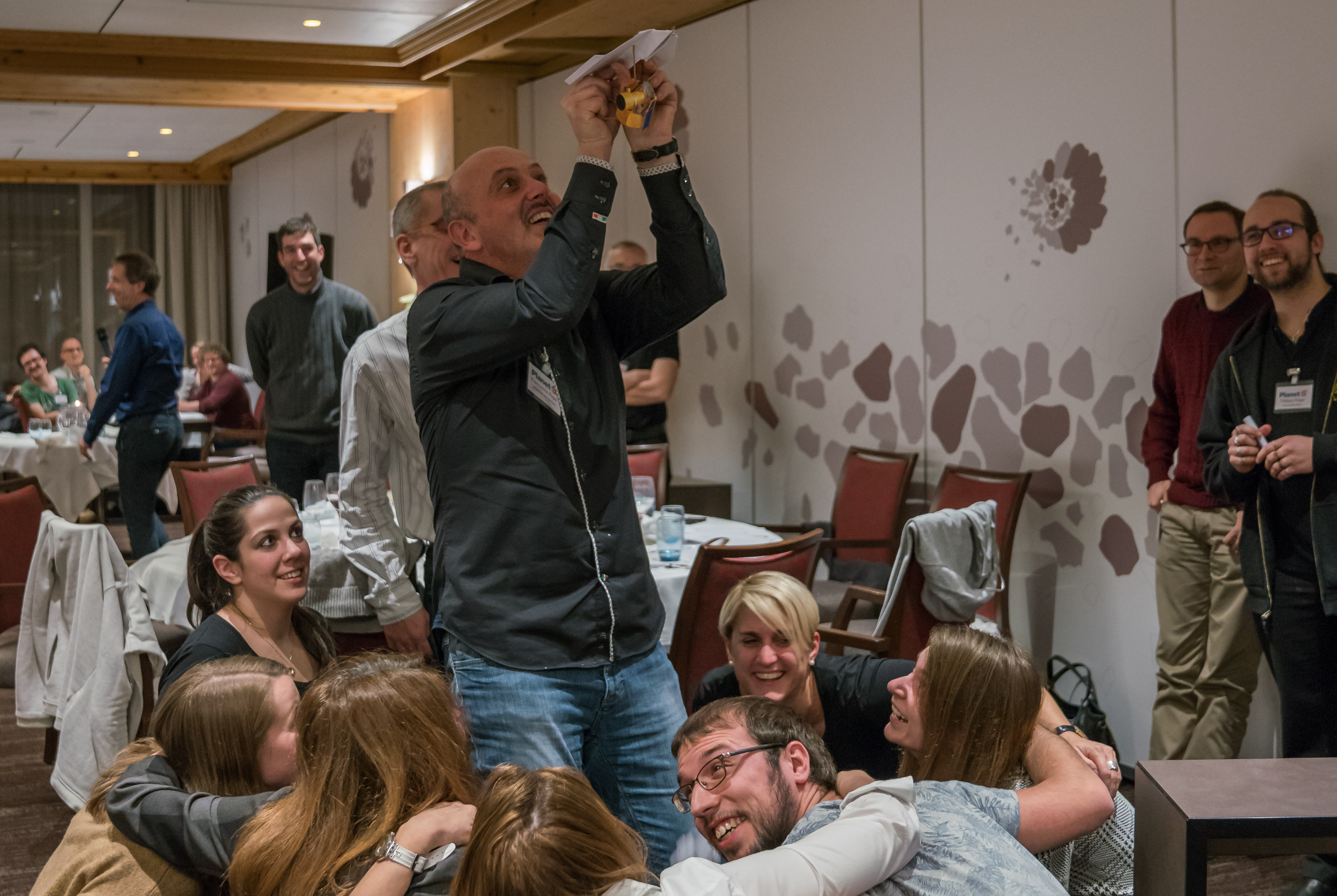
Difficult tasks require creative solutions and support from the team.
The networking of researchers from the various institutions is one of the NCCR’s objectives throughout the project, and in particular of the General Assembly. In Grindelwald, the young scientists reported about their first JUniors Researchers’ Assembly (JURA) in a “senior free” environment in September 2017, whereas NCCR director Willy Benz summarized the outcome of an extended board meeting deciding about which projects would be realized as bonus program if the Swiss National Science Foundation were to increase its funding of PlanetS for phase two. The overall title of this special domain is called “Frontiers in habitability”.
How well the generations can work together was impressively demonstrated during the game traditionally played after the first day of the General Assembly. With the help of PlanetS member Thibaut Roger, the NCCR director prepared a quiz about science fiction that demanded everything from the groups that had to form themselves first – a special mingling experience. The tasks included recognizing movie trailers just by listening to a short audio piece. The range spanned from “2001 Space Odyssey” to “Gravity” to “The Last Jedi”. “I was surprised that the worst score was 6 out of 8,” says Willy Benz. But the highlight was certainly the launch of CHEOPS with the help of many creative forces.
The real lift-off of the the satellite will take place in Kourou between December 2018 and March 2019. The telescope is already fully assembled and will be calibrated in the next weeks in the thermal-vacuum chamber at the University of Bern. “It needs to be in Madrid by 29 March to be integrated in the spacecraft,” said CHEOPS Principal Investigator Willy Benz. “CHEOPS is about measuring densities,” explained David Ehrenreich, Mission Scientist of the telescope and professor at the University of Geneva. At the moment, there are over 500 different targets and 24 science projects in the Guaranteed Time Observing (GTO) Programme, which is under the responsibility of the CHEOPS Science Time and has to be presented to ESA in April 2018. “It is still work in progress,” said David Ehrenreich.
Read also:
The editorial and article by Stéphane Udry
The interview with Tomas Brage, speaker at gender workshop
The report about the tinkering workshop
The making-of of the winning poster
